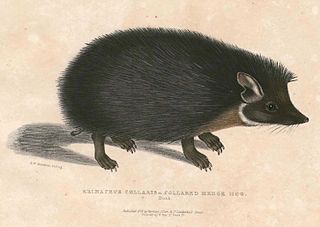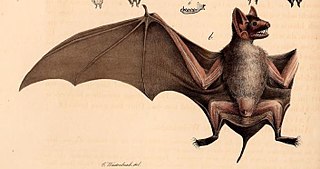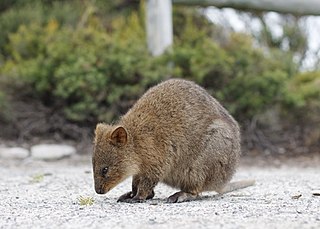 W
WThe African palm civet, also known as the two-spotted palm civet, is a small feliform mammal widely distributed in sub-Saharan Africa. It is listed as Least Concern on the IUCN Red List.
 W
WThe bare-backed fruit bat is a fruit bat in the family Pteropodidae.
 W
WThe collared tuco-tuco is a tuco-tuco species from South America. It is found in southern Brazil, Uruguay and northern Argentina where it lives underground in a burrow it digs in savannah habitats. It is a relatively common species and the IUCN has assessed its conservation status as being of "least concern".
 W
WCtenodactylus is a genus of rodent in the family Ctenodactylidae.
 W
WThe green bush squirrel is a species of rodent in the family Sciuridae.
 W
WThe Indian long-eared hedgehog is a small species of mammal native to northern India and Pakistan. It is insectivorous and nocturnal.
 W
WThe insular flying fox or Pacific flying fox is a species of flying fox in the family Pteropodidae. It is geographically widespread, the most widespread flying fox in the Pacific: it is found in American Samoa, the Cook Islands, Fiji, New Caledonia, Niue, Papua New Guinea, Samoa, the Solomon Islands, Tonga, and Vanuatu.
 W
WThe white-sided jackrabbit, also known as the Mexican hare, is a jackrabbit found in a limited range in North America, from southern New Mexico to northwestern and central Mexico. The animal is considered threatened in New Mexico, with its numbers in decline in recent years.
 W
WThe long-tailed spiny rat, Proechimys longicaudatus, is a spiny rat species from South America. It is found in Bolivia, Brazil and Paraguay.
 W
WThe Moluccan naked-backed fruit bat is a species of megabat in the family Pteropodidae. It is found in the Maluku Islands and Western New Guinea of Indonesia, Papua New Guinea, and Australia.
 W
WThe mouse-tailed Atlantic spiny-rat, Trinomys myosuros, is a spiny rat species from South America. It is found in Brazil.
 W
WThe naked-rumped tomb bat is a species of sac-winged bat in the family Emballonuridae. Found in northern Africa, the Middle East, and southeastern Asia, its natural habitats are dry savanna, subtropical or tropical dry shrubland and forests, caves, and arid areas.
 W
WThe quokka, also known as the short-tailed scrub wallaby, the only member of the genus Setonix, is a small macropod about the size of a domestic cat. Like other marsupials in the macropod family, the quokka is herbivorous and mainly nocturnal.
 W
WThe ringtail is a mammal of the raccoon family native to arid regions of North America. It is widely distributed and well adapted to disturbed areas. It has been legally trapped for its fur. It is listed as Least Concern on the IUCN Red List. It is also known as the ringtail cat, ring-tailed cat, miner's cat or bassarisk, and is sometimes called a cacomistle, though this term seems to be more often used to refer to Bassariscus sumichrasti.
 W
WThe rusty-spotted genet, also called panther genet and large-spotted genet, is a genet that is widely distributed in sub-Saharan Africa. It is considered common and therefore listed as Least Concern on the IUCN Red List.
 W
WThe southern red-backed vole or Gapper's red-backed vole is a small slender vole found in Canada and the northern United States. It is closely related to the western red-backed vole, which lives to the south and west of its range and which is less red with a less sharply bicolored tail.
 W
WThe woodland vole is a small vole found in eastern North America. It is also known as the pine vole.
 W
WThe woolly giant rat is a species of large burrowing rodent native to South America. No subspecies are currently recognised. It is the only member of the genus Kunsia.